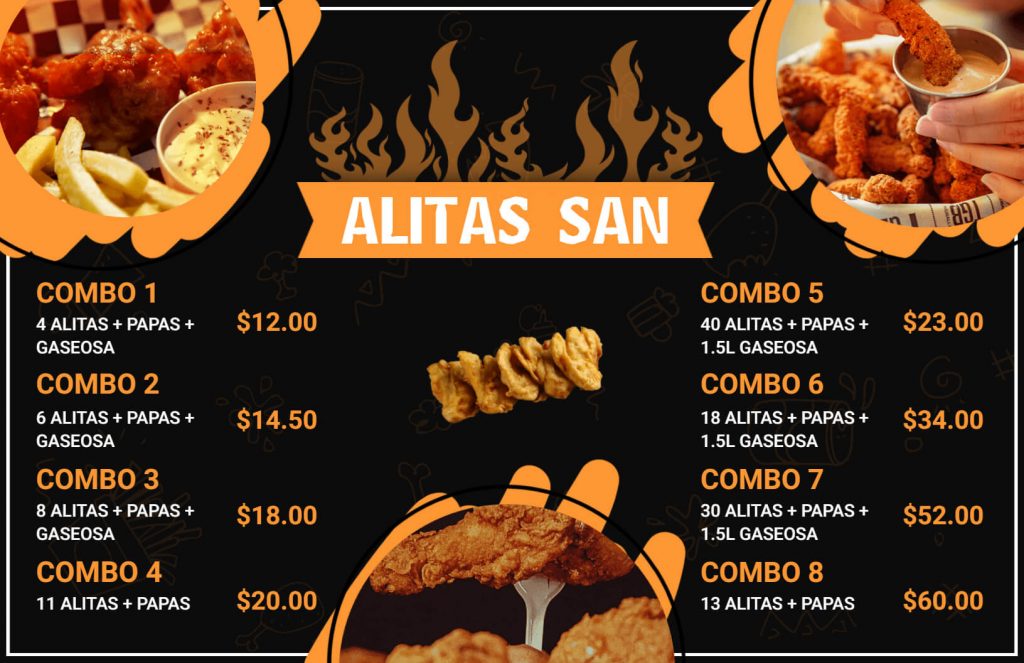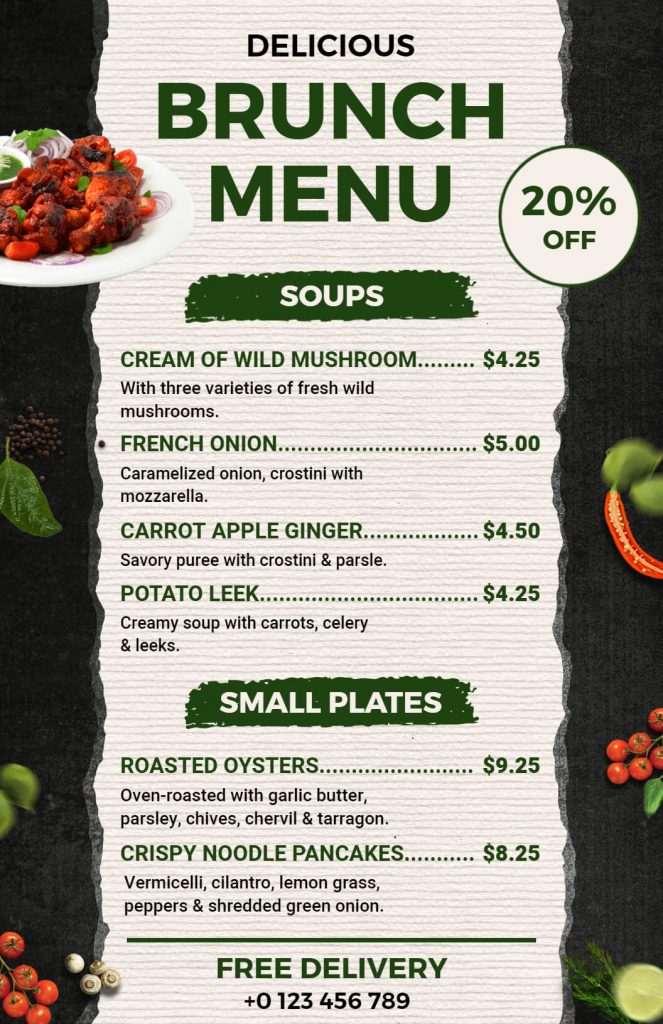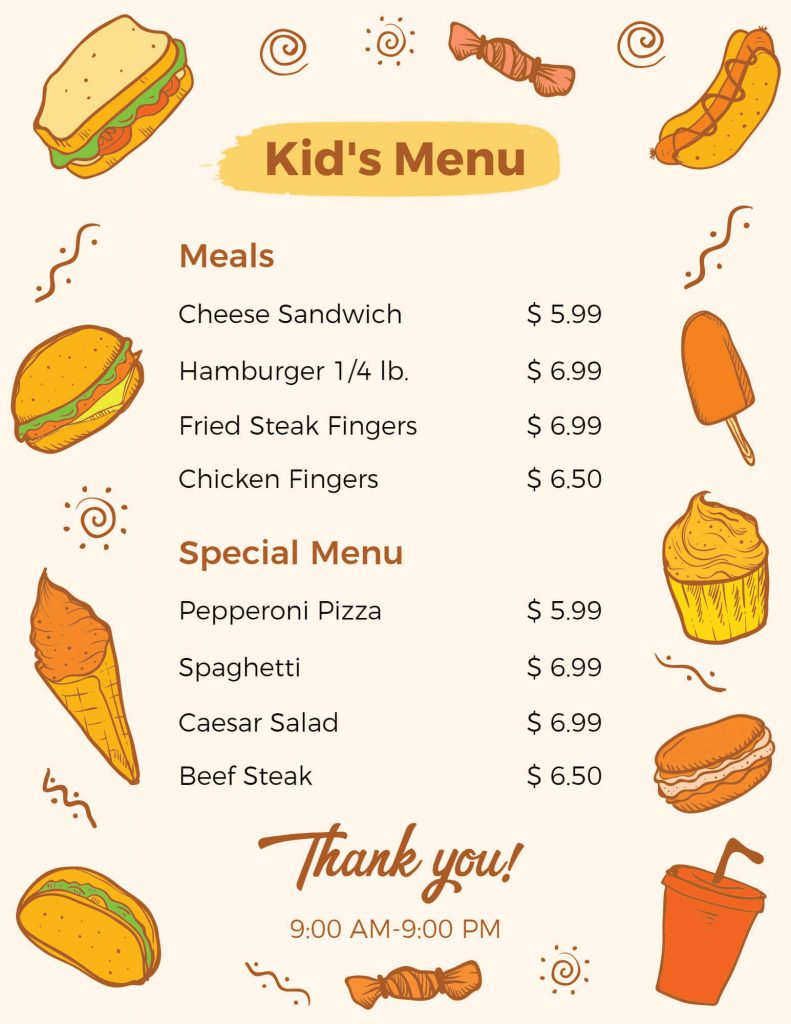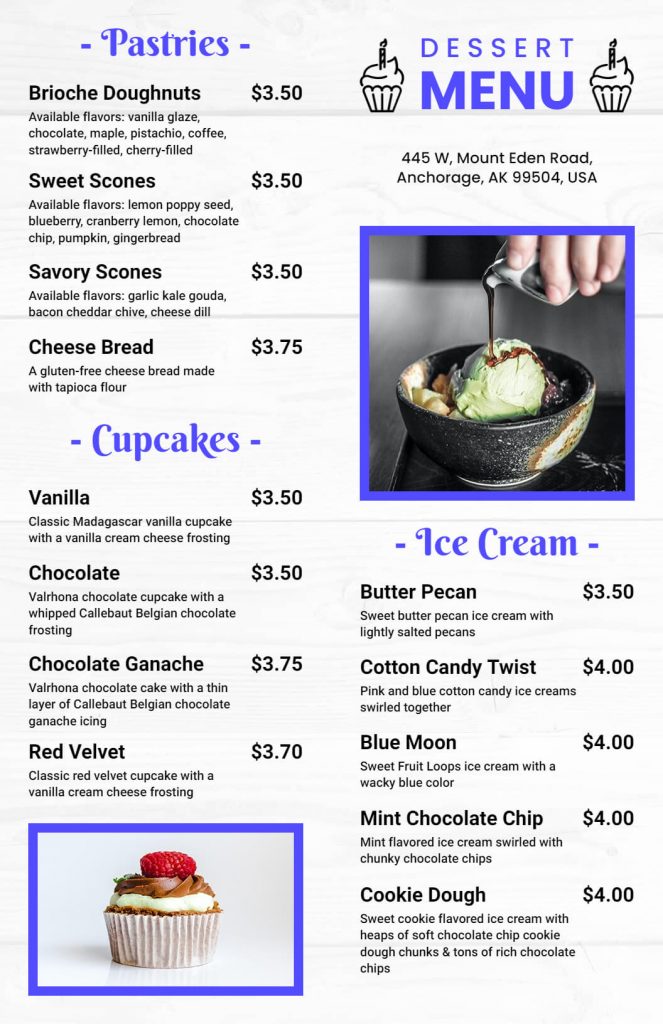Have you ever wondered why some restaurants use certain colors in their menus? Did you ever think about how the color of the menu influences your mood, appetite, and overall experience? Color psychology plays a significant role in menu design, and it affects not only the way we perceive the food but also the way we feel about the dining experience. In this blog, we will discuss the impact and benefits of color psychology on restaurant menu.
Mainly, a menu maker is a great tool for incorporating color psychology into your restaurant menu design. With its user-friendly interface, you can easily experiment with different color palettes and see how they affect the overall look and feel of your menu. For example, if you want to create a menu that stimulates the appetite, you might try using warm colors like reds, yellows, and oranges. Alternatively, if you want to create a calming and relaxing dining experience, you could experiment with cooler blues and greens. Menu Maker also allows you to upload images of your dishes, which can further enhance the impact of color by showcasing the vibrant hues of your ingredients. By using a menu maker to carefully consider the impact of color psychology in your menu design, you can create a dining experience that truly delights your customers.
The Impact of Color Psychology on Restaurant Menu
Color psychology is the study of how colors affect human behavior, emotions, and decision-making. Consequently, different colors have various psychological effects, and they can influence our mood, appetite, and perception of taste. Additionally, the colors used in restaurant menus can evoke different emotions and can influence the customer’s perception of the food and the restaurant. To illustrate, here are some of the colors and their psychological effects on people:
Red
The color red is associated with passion, excitement, and appetite. It can stimulate the senses, increase heart rate and blood pressure, and boost appetite. Specifically, using red in a restaurant menu can create a sense of urgency and encourage customers to order quickly, fast-food chains often use the color red as it increases the customer’s appetite and encourages impulse purchases.
Yellow
However, the color yellow is associated with happiness, warmth, and optimism. It can stimulate the appetite, increase energy levels, and create a sense of comfort. Therefore, using yellow in a restaurant menu can make customers feel more relaxed and comfortable. Consequently, this can result in a more enjoyable dining experience.
Green
When it comes to a restaurant menu, the color green is often associated with nature, freshness, and health. In fact, this color has been shown to promote a sense of calm and relaxation, making it an excellent choice for creating a peaceful and refreshing atmosphere. By incorporating green into their menus, restaurants can suggest that they offer healthy and natural cuisine, which can greatly appeal to customers searching for healthier food options.
Blue
The color blue is associated with calmness, serenity, and stability. It can create a sense of relaxation and promote a feeling of trust. Using blue in a restaurant menu can create a calm and relaxing atmosphere, and it can also suggest seafood or fish-based cuisine.
Orange
The color orange is widely recognized for its association with enthusiasm, creativity, and warmth. Moreover, it is known to stimulate the appetite and create a sense of excitement. By incorporating orange into a restaurant menu, it is possible to establish a lively and energetic atmosphere, which can greatly appeal to customers seeking a fun and vibrant dining experience. For example, featuring dishes that pair well with North Carolina’s best beers can leverage orange’s vibrant hue to enhance both the visual and gustatory appeal of local craft beer selections.
The Benefits of Color Psychology on Restaurant Menus
Apart from the psychological effects, the color psychology of restaurant menus can also impact the overall customer experience. Here are some of the benefits of using color psychology in restaurant menus:
Enhancing Appetite
When it comes to a restaurant menu, the right colors can play a crucial role in stimulating the appetite and encouraging customers to order more food. Specifically, colors such as red, yellow, and orange are known for their ability to increase appetite and create a sense of excitement. By incorporating these colors into their menus, restaurants can effectively boost their sales and revenue.
Improving Brand Perception
The colors used in a restaurant menu can reflect the brand’s personality and create a specific atmosphere. For example, using green in a restaurant menu can suggest a health-conscious cuisine, while using red can create a fast and lively atmosphere. By choosing the right colors, restaurants can improve their brand perception and attract more customers.
Increasing Customer Satisfaction
The colors used in a restaurant menu can impact the overall customer experience transformation. By creating a comfortable and relaxing atmosphere, restaurants can improve customer satisfaction and encourage customers to return. The use of warm colors like yellow and orange can create a welcoming atmosphere, while cool colors like blue and green can create a calm and refreshing atmosphere.
Creating a Memorable Experience
By using the right colors in a restaurant menu, it is possible to create a memorable dining experience. Specifically, by selecting colors that reflect the restaurant’s personality and create a specific atmosphere, restaurants can differentiate themselves from the competition and establish a unique dining experience.
Promoting Menu Items
However, using color psychology in a restaurant menu can promote specific menu items. Restaurants can draw attention to certain dishes and increase their sales by using bold colors or highlighting them. For instance, highlighting a particular dish in red can create a sense of urgency and encourage customers to order it.
Creating Consistency
Moreover, using color psychology in a restaurant menu can create consistency throughout the establishment. Restaurants can create a cohesive brand image and reinforce their identity by using the same colors and design elements in the menu. This can help customers identify the restaurant and make it more memorable.
Now, let’s have a look at restaurant menu templates after you had a look at the impact and benefits of color psychology on the restaurant menu.
Restaurant Menu Templates
A restaurant menu template is a visual representation of a chef’s culinary vision. It showcases the dishes and drinks offered in a visually appealing and enticing manner. A well-designed menu template can elevate the dining experience and enhance customer satisfaction. Struggling to find restaurant menu templates? Don’t worry you are in the right place, create your restaurant menu with us to save your time and effort by using user-friendly tools, hundreds of fonts, tons of stickers, and images.
A La Carte Menu(Individually priced menu):
This menu offers individual dish pricing, allowing diners to order any combination of dishes they desire.
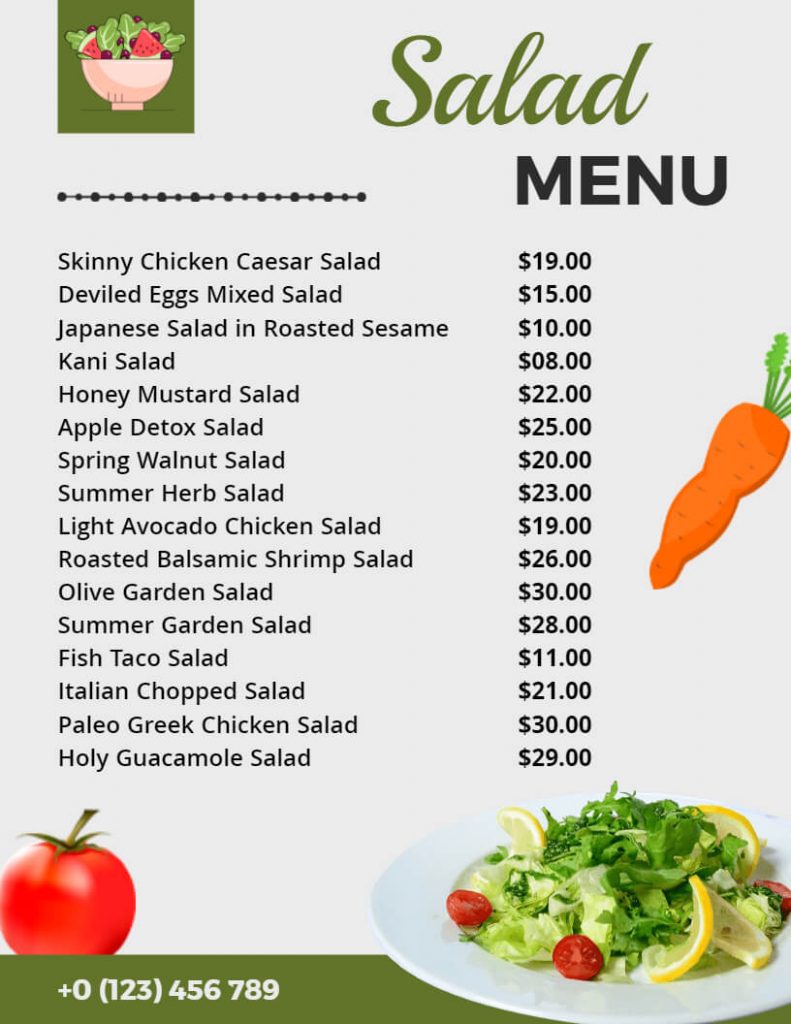
Buffet Menu:
A buffet menu offers a wide selection of dishes that diners can serve themselves from a self-service area.
Tasting Menu:
A tasting menu is a selection of smaller dishes that allows diners to try a variety of flavors and textures.
Family-Style Menu:
This type of menu is designed for sharing and typically features larger portions that can be divided among several diners.
Brunch Menu:
Restaurants typically serve brunch menus on weekends, featuring a mix of breakfast and lunch dishes.
Children’s Menu:
Restaurants design this type of menu specifically for children, typically featuring smaller portions and simpler dishes.
Happy Hour Menu:
Restaurants typically offer happy hour menus during a specific time of day, featuring discounted prices on drinks and appetizers.
Dessert Menu:
A dessert menu specifically features a selection of sweet treats that can be ordered at the end of a meal.
Beverage Menu:
A beverage menu features a selection of drinks including cocktails, wine, beer, and non-alcoholic beverages.
Special Event Menu:
An event organizer designs a special event menu for a specific occasion or event. These occasional menus cater to a wide variety of events, such as holidays, weddings, birthdays, anniversaries, and corporate events. Transitioning from the previous sentence, it is important to note that creating a specialized menu for an event adds a unique touch and personalization to the overall experience for guests.
Bottom Line
In conclusion, color psychology plays a significant role in restaurant menu design. The colors used in a restaurant menu can have a significant impact on the customer’s mood, appetite, and perception of the food and the restaurant. By using the right colors, restaurants can not only enhance the customer experience but also promote specific menu items and create a memorable dining experience. In fact, color psychology is a powerful tool that can help restaurants stand out from the competition and establish a unique brand identity.
In addition, if you’re looking to design a restaurant flyer, here’s something for you: look at the best restaurant flyer design ideas and examples for motivation. These restaurant flyer suggestions will inspire you to get inventive and help you determine what works.


